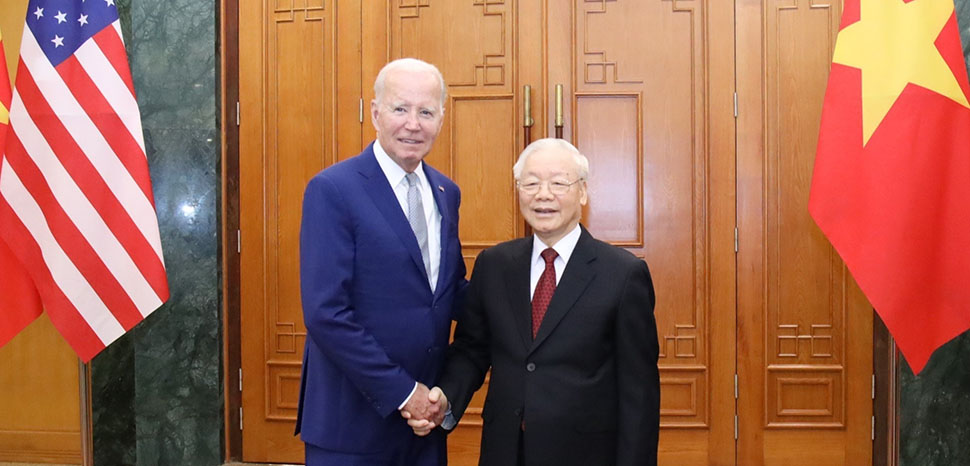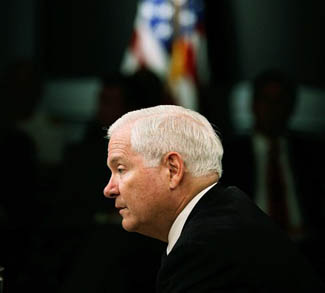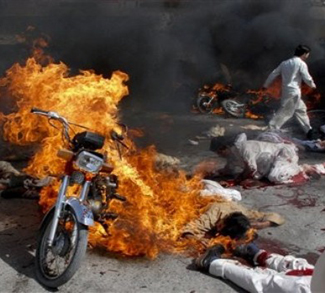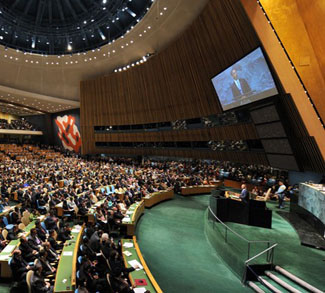Vietnam and the United States have finally arrived at a new higher level of bilateral relationship after a protracted and difficult journey through a complicated history of conflict and cooperation. In order to strengthen strategic interests for peace, stability, and prosperity for both sides, and promote a rules-based international order, President Joe Biden and General Secretary Nguyen Phu Trong reached a historic accord to upgrade the bilateral relationship between the two countries in a two-day visit by President Biden to Hanoi on September 10-11.
Following the agreement’s conclusion, in order to implement the newly reached deal, Vietnam Prime Minister Pham Minh Chinh is scheduled to meet various US federal and local officials in Washington DC and San Francisco on his trip to the US later this month, which also includes attending the high-level meetings of the 78th Session of the General Assembly in New York.
There are some opinions that the threat from China, especially Beijing’s assertive actions in the South China Sea, may be part of the reason why the United States and Vietnam are moving closer. However, the actual roadmap for developing relations between Hanoi and Washington dates back 50 years, after the last US soldiers departed Vietnam. The mistrust and hostility between the two parties was challenging to overcome. Changing relations with America required Hanoi to adopt “new thinking” or “renovation” in the 1980s. Vietnam made further efforts to diversify its economy and broaden its diplomatic area of influence after the fall of the Soviet Union.
The majority of post-Vietnam War analysts concur that the opening of the POW/MIA accounting office in Hanoi, together with Washington’s humanitarian aid, contributed to a thawing of relations between the two nations. Former President Bill Clinton’s decision to normalize relations in 1995 was one of the key openings. Reconciliation was undoubtedly facilitated by a variety of methods, including specific acts made by both countries to mend the severe wartime scars.
Through the efforts of the late Senator John McCain, a former Navy pilot and POW, and Senator John Kerry, a fellow war veteran, the U.S. Congress assisted in fostering confidence between Washington and Hanoi. Additionally, Democratic Senator from Vermont Patrick Leahy played a crucial role in getting Congress to approve aid for Vietnamese citizens who have been injured by landmines and explosive ordnance.
Potential cooperation areas are opening under the new relationship framework
Few countries have staged as dramatic a turnaround in relations as the United States and Vietnam. Normalization ushered in a huge growth in trade between the two countries and has increased by more than 200 times since then. As a result, more Americans opted to travel to Vietnam and helped fuel the nascent tourism industry with increasing numbers of former Vietnam War veterans, and former refugees “Viet Kieu” and their families. US schools and companies in turn have attracted thousands of Vietnamese students and recent graduates. It helps that Vietnam, still recognized as an emerging economy has nearly a 98% literacy rate.
A key foundation of the educational connection and development is the impressive new Fulbright University Vietnam (FUV) located in Ho Chi Minh City. Established in 2016, it is the nation’s first fully independent, non-profit university and is a cornerstone of the US-Vietnamese partnership. This institution is modeled on the American traditions of a liberal arts education but also rooted in Vietnam’s culture and heritage, where I was invited to present a lecture on the South China Sea. The implementation of the new relationship framework is expected to bring many benefits to both countries in most fields, especially the development of Vietnam’s semiconductor industry, educational and scientific cooperation, 5G technology, artificial intelligence, modernizing the education and improving defense capability of Vietnam.
According to a Center for Strategic & International Studies (CSIS) report, foreign direct investment from the United States into Vietnam has increased from under $1 billion in 2011 to over $2.6 billion in 2019. Due to the trade war with Beijing, some US companies sought to diversify their supply chains out of China. Vietnam’s proximity to China, alongside its improving business environment, young and highly educated workforce, and entrepreneurial mindset helped make it one of the few beneficiaries of the US-China trade war.
The evolution of cooperation extends to science and technology, as seen in the $15.5 billion Just Energy Transition Partnership agreed to in 2022. It brings considerable investment to help Vietnam achieve the ambitious targets its sets forth of limiting greenhouse gas emissions by 2030, capping coal capacity, and accelerating the adoption of renewables to account for 47 percent of electricity generation by 2030. Also, over the last five years, USAID support spurred more than $300 million of investment in solar and wind projects in Vietnam.
The United States and Vietnam have collaborated on various security projects, such as helping the Vietnam Coast Guard; combating transnational organized crime, including the trafficking of people, drugs, and chemical precursors as well as wildlife; addressing illegal, unreported, and unregulated (IUU) fishing; and enhancing Vietnam’s capacity to maintain awareness of the maritime domain to protect its sovereignty.
General Secretary Trong oversaw all of the above measures. The anti-corruption efforts led by the Party Secretary have garnered significant acclaim from US investors and other stakeholders. Under his leadership, Vietnam has made notable progress in its standing on Transparency International’s Corruption Perceptions Index. However, it is important to acknowledge that further action is required, as Vietnam currently holds the 77th position among 189 nations in the index.
Vietnam has defied geopolitical instability and a turbulent global economy. The country’s political leadership is translating into increased foreign investment, reaching an all-time high of $22.4 billion in 2022. The first quarter results for 2023 are also record-breaking, with inflows at $10.13 billion and estimates that it might reach as high as $36 billion by year-end. A key part of Vietnam’s strategy is to attract high-tech and high-value foreign investments and help advance Vietnam’s technological capabilities.
The main goal is to enhance Vietnam’s public administration and business climate in order to create a more favorable policy environment for international investors.
US Investment in Vietnam
The United States has emerged as a leading force in establishing investments in Vietnam, with more than 52 multinational corporations such as Apple, Boeing, Lockheed, Meta, and Space X taking the lead. These investments are crucial in supporting Vietnam’s ambitious goal of developing its digital economy, creating fresh prospects across several sectors including video streaming and military. Based on a report jointly conducted by Google, Bain, and Temasek, it is projected that Vietnam’s digital economy will attain a value of over $49 billion by the year 2025.
The lifting of the post-war arms embargo in 2016 was another factor in the two countries’ evolving relationship. As a result, the United States exported defense platforms such as Boeing ScanEagle drones, several Coast Guard cutters, and at least 24 patrol boats to Vietnam to support its efforts to uphold stability and peace in the South China Sea.
For now, the advantages of increasing Vietnam’s ties with the US significantly exceed the disadvantages. The difficulty for Hanoi is to make sure that Washington keeps its word in order to secure real benefits from this strengthened strategic alliance.
The views expressed in this article belong to the authors alone and do not necessarily reflect those of Geopoliticalmonitor.com.




